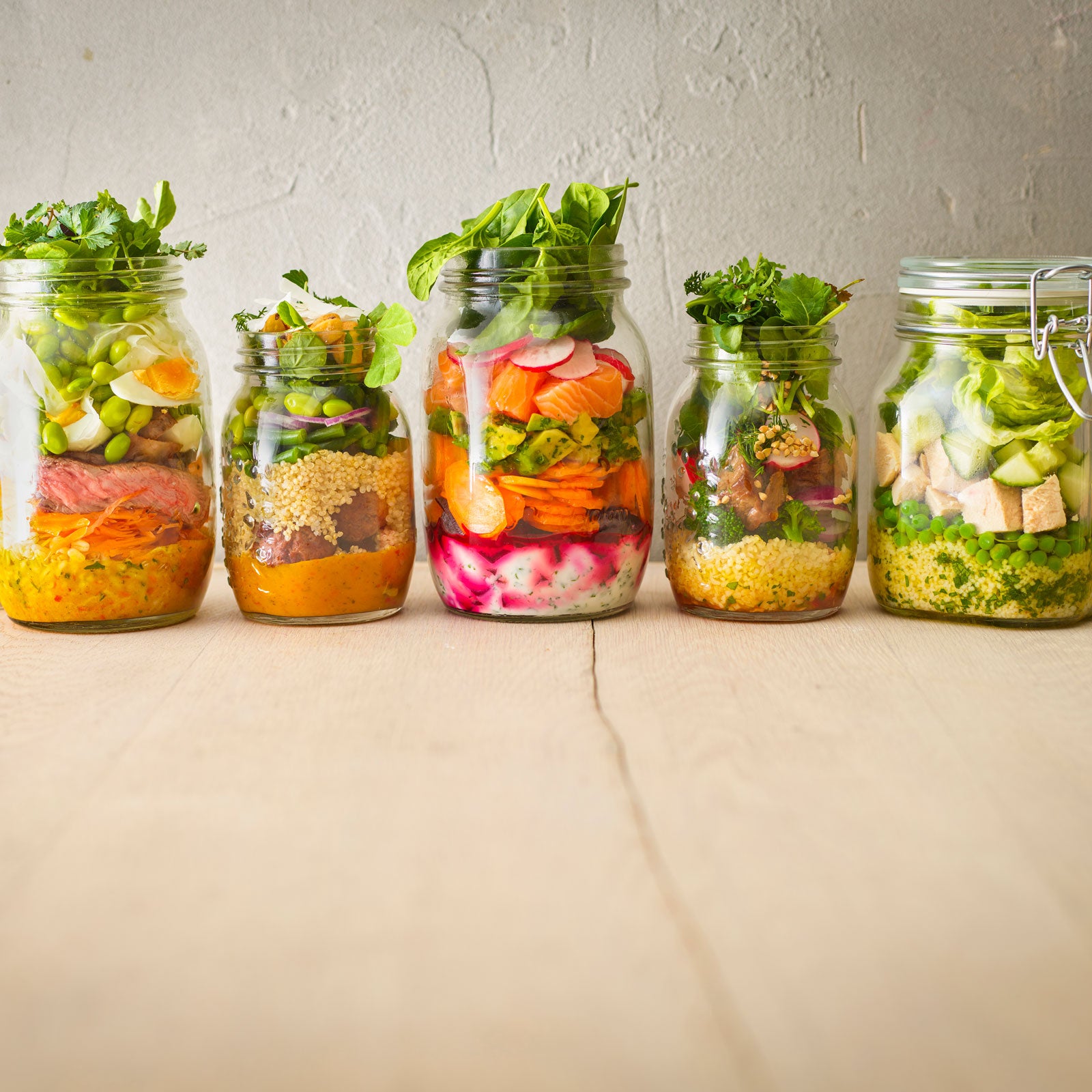We all know that eating vegetables is important, but itÔÇÖs easy to get stuck in a spinach and broccoli rut. Both┬á and the ┬árecommend adding a wide variety of┬ávegetables to your diet, since each veggie contains a different micronutrient profile of vitamins, antioxidants, amino acids, and minerals. More standard options, like carrots, bell peppers, and mushrooms, are great, too, but if youÔÇÖre looking to switch things up, consider introducing┬ásome of these less popular┬ánutrient-dense┬ávegetables to your plate.
░ń▒▒˘▒░¨ż▒▓╣│Ž╠ř
Also known as celery root, celeriac makes a great┬álow-starch alternative to white potatoes. It has┬áa similar flavor and texture when cooked, but celeriac has about . Dana Lis, director of performance nutrition at the University of California at Davis,┬ánotes that this is ideal for athletes who are trying to fuel appropriately on an easy day.┬áÔÇťOn a rest day, you donÔÇÖt need the same amount of carbohydrates that you would need after a hard effort,ÔÇŁ she says.┬áÔÇťSo something like this is a perfect way to add nutrients while lowering carbohydrates without sacrificing satiety or flavor.ÔÇŁ ItÔÇÖs also high in potassium, vitamins K and B6, and fiber, which are important for digestion and bone, nerve, and brain┬áhealth.╠ř╠ř
Kelp
In 2017, researchers at the University of Southern Denmark that the human brain evolved partially as a result of┬ánutrients found in seaweedÔÇölike┬á which is , plus iron and vitamin K. Lis explains that kelp is a tasty way to add new flavor and texture to your next meal, and it┬ámakes┬áa ,┬áwith only 186 milligrams of sodium per full cup. Vegetarians and vegans missing fishy or┬áumami flavors can mix it into salads and stir-fries, and it even makes a .
Watermelon Radish
This cute radish is a crowd-pleaser. Slice it and youÔÇÖll discover┬áa bright-green outer ring and a hot-pink fillingÔÇöit resembles a tiny watermelon. A satisfying crunch and crisp, slightly peppery flavor make┬áit a fantastic┬áraw vegetable to munch on, while scoring vitamin C, phosphorus, folate, and potassium in the process, all of which contribute to good cellular health (among many other benefits). Use it as a salad topper, in a vegetable tray, or┬áfor easy at-home pickling.╠ř╠ř
Red Cabbage
While youÔÇÖve probably encountered red cabbage as a garnish for your fish tacos or house salad, you should consider making it a bigger part of your diet. A┬á 85 percent of your daily dose of vitamin K plus 54 percent of your daily vitamin C. ItÔÇÖs also richer in antioxidants than regular cabbage: it contains which have been linked to , and.┬áÔÇťTypically, the more colorful, the higher the nutrient density,ÔÇŁ Lis explains. Red cabbage┬áalso makes a crunchier, more colorful┬ácoleslaw than its pasty-white counterpart.┬á
Dulse
If youÔÇÖre eating a plant-based diet, dulse should be on your radar: its robust nutrient profile covers vitamins like B12 that are hard to find when youÔÇÖre not eating animal products. Dulse is a type of seaweed that can be bought in (donÔÇÖt be dismayed by its similarity to fish food), which makes it great for┬á increasing sodium. ItÔÇÖs rich in┬ávitamins B6, E, and A, contains the same ┬áas milkÔÇöwhich are great for ÔÇöa▓ď╗ň╠ř│ˇ▓╣▓§ ┬álevels to most beans or legumes.┬á
Beet Greens
You may already be on the beet bandwagon, but donÔÇÖt throw away the leafy tops. Beet greens cook down into a tasty saut├ę with a bit of butter or olive oil, says Lis, and the sturdy are packed with vitamins A and K, copper, iron, calcium, and manganeseÔÇöall of which the brain and nervous system rely on to function properly. And a┬ábunch of beets┬áoffers more bang for your buck┬áin the veggie aisle, because┬áyou get nitrate-rich beetroot┬áas well as the┬áfiber-packed┬áleafy-green tops.┬á
Broccoli Microgreens
Small but mighty microgreens have exploded in popularity in recent years┬áand for good reason: that they contain more micronutrients than many of their fully grown versions. Broccoli microgreens are some of the ┬ábut are also now available at most grocery stores. TheyÔÇÖre packed with twice as much vitamin C as a serving of spinach, as well as vitamin A, antioxidants, and key amino acids. Their crunchy texture holds up equally┬áwell in┬ásalads and stir-fries.
Yugoslavian Red Lettuce 
If you love crisp, sweet lettuces like romaine and iceberg but are looking for something┬ámore nutrient-dense, try┬áYugoslavian red.┬áItÔÇÖs higher in vitamin A and K, antioxidants,┬áand iron than romaine┬ábut maintains the same sweet flavor and crunch. Those antioxidants help your body efficiently process free radicalsÔÇöthe potentially harmful chemical by-products of metabolism.┬áYugoslavian red lettuce is easy to grow at home, so if youÔÇÖre looking for cheap, simple options to ,┬áitÔÇÖs a good choice.┬á
Fiddleheads
Fiddleheads, the bright-green curled tips of young ferns, are easy to identify and make a great┬á.┬áTheyÔÇÖre only in season for a few weeks each spring, when you can also find them at specialty grocery stores or farmersÔÇÖ markets.┬áThe┬ácurlicued┬áspirals taste a bit like asparagus but are packed with more micronutrients, including vitamin K, iron, and potassium, as well as 5.6 grams of protein per one-cup serving. However,┬á to release a toxin that can cause symptoms of food poisoning, so make sure to steam or┬ásaut├ę┬áthem for at least ten┬áminutes.┬á
Romanesco
This vegetable is similar to broccoli in terms of its , with vitamins C and K as well as antioxidants, but itÔÇÖs a dinner-party showstopper thanks to its neat whirling patterns.┬áA single-cup serving packs in four grams of protein and two grams of fiber, making it a good option if youÔÇÖre hoping to cut down on your meat consumption. It tastes a bit nuttier than broccoli or cauliflower┬áand adds a bit of depth to a roasted-vegetable medley.
Kohlrabi
Kohlrabi is shaped and sized like a turnip, but this root vegetable is more similar to brussels sprouts┬áin flavor. ItÔÇÖs extremely low calorieÔÇöjust 37┬áper cupÔÇöand a whopping five grams of fiber per serving in addition to calcium, iron, potassium, and 139 percent of your daily recommended vitamin C. It can be eaten raw or cooked┬áand makes a great cabbage substitute. Keep the stems and use them in a┬ásaut├ę┬áfor bonus fiber, iron, and antioxidants.


